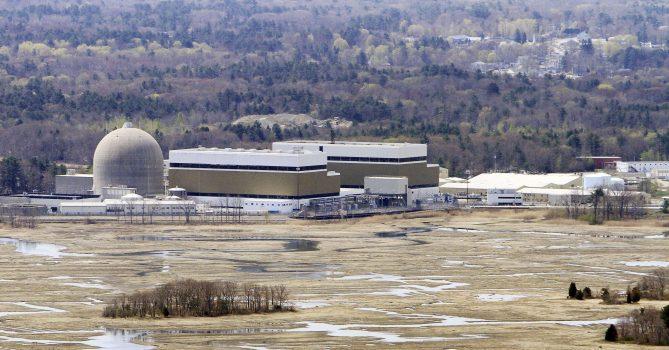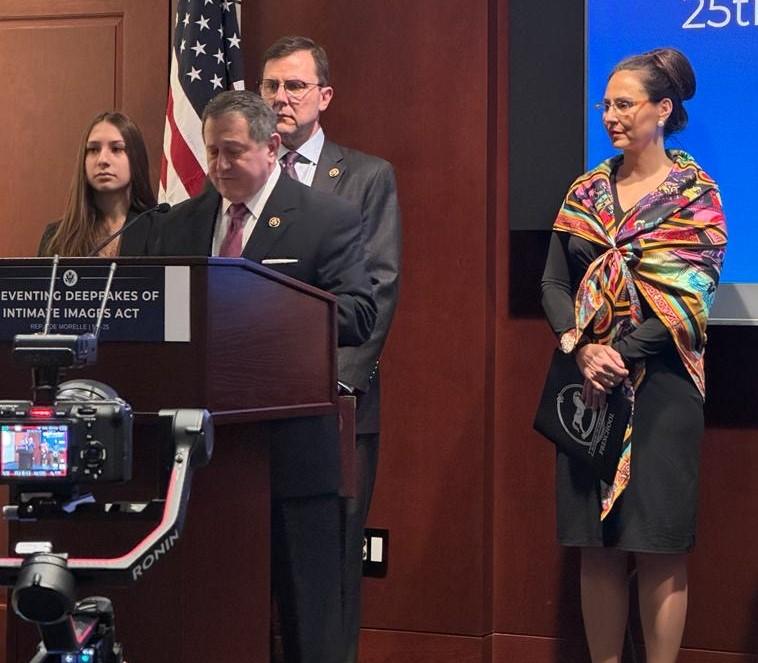House Committee on Energy and Commerce Chair Cathy McMorris Rodgers (R-Wash.) said in a hearing on April 18 that in the interest of strengthening American security, the nation must mobilize and solidify and grow its position as a leader in nuclear energy.
McMorris Rodgers made the comments at a hearing of the Energy, Climate, and Grid Security subcommittee of the Committee on Energy and Commerce. She and House colleagues had recently been on a fact-finding and diplomatic trip to Europe, where they observed energy policies and initiatives of nations on the continent.
Amid growing concern about the effects of carbon emissions and fossil fuels on the climate, nuclear energy, which is clean and does not emit carbon into the atmosphere, meets with favor from lawmakers of both parties.
The 92 nuclear reactors in the United States produce about half of the nation’s carbon-free electricity.
“Many of us just returned from Europe, where we heard a lot about the scary realities of shutting down nuclear energy,” said McMorris Rodgers.
“Putin is weaponizing Europe’s Reliance on Russian natural gas as he shuts down gas pipelines. Countries have been forced to scramble to secure their energy supplies, keep their economies running, and [keep] energy affordable. Germany, which just completed its phase-out of its nuclear power plants this weekend, is especially in crisis,” she said.
“America, not Russia or China, must lead to restore and expand our leadership in nuclear energy, and we do it by unleashing our unmatched genius for innovation, by assuring a predictable regulatory landscape to help attract investment and support decisions to expand nuclear deployment, and by encouraging new technologies that will provide exciting new nuclear applications.”
Nuclear energy industry leaders and experts testified and answered questions at the hearing, which was titled “American Nuclear Energy Expansion: Powering a Clean and Secure Future.”

Testifying at the hearing were Jeremy Harrell, Chair of the Board of Directors, U.S. Nuclear Industry Council; Regis Repko, Senior Vice President, Generation and Transmission Strategy, Duke Energy; Armond Cohen, Executive Director, Clean Air Task Force; and Dr. Jess Gehin, Associate Laboratory Director, Nuclear Science and Technology, Idaho National Laboratory.
Challenges, Opportunities
Rep. Jeff Duncan (R-S.C.), chair of the Subcommittee on Energy, Climate, and Grid Security, had also been on the Europe trip.“We met with several groups excited about the promise of employing more nuclear, especially advanced reactors,” Duncan said.
Duncan mentioned that Germany was shutting down plants, a policy that the United States must not follow, for “nuclear energy must be part of our energy matrix.”
He added: “To expand the industry, it is vital we encourage regulatory certainty and make sure our reactor licensing processes enable the safe and broad deployment of nuclear technologies.”
Dr. Jess Gehin presented the subcommittee with a statement that detailed the extent of the dependence of the United States on foreign uranium.
“The United States is highly reliant on other nations for uranium needed to operate our reactor fleet,” read the statement.
“Currently, our nation imports over 90 percent of the uranium needed for our reactor fleet. In the United States, uranium mining has decreased 92 percent since 1980. In 2021, the United States domestically produced only 5 percent of the uranium purchased, according to the U.S. government’s Energy Information Administration.”
Also noted in the statement, again referencing Energy Information Administration statistics, is that “operators of U.S. nuclear power reactors purchased the equivalent of roughly 47 million pounds of uranium in 2021. Of that, 35 percent came from Kazakhstan, 15 percent from Canada, and 14 percent from both Australia and Russia.”

Rep. Diana DeGette (D-Colo.), ranking member on the subcommittee and backer of nuclear energy, addressed the need for safe and effective methods to handle the spent radioactive fuel that reactors create.
“If nuclear energy is to play a role in our energy transition, we must address two things,' said DeGette.
“First, the United States must develop a comprehensive science-based strategy to dispose of spent fuel, a strategy that does not cause harm to public health or our environment,” she said.
“If we don’t have a long-term permanent solution for disposing of nuclear waste, then we will struggle to be able to use this source of carbon-free electricity. We must also figure out how to handle the aging of our nuclear plants. Since I’ve been in Congress, we’ve only had one new nuclear power plant come online, and during that same time, we’ve shut down and decommissioned many reactors across the country, including the one reactor we had in our state of Colorado.”





